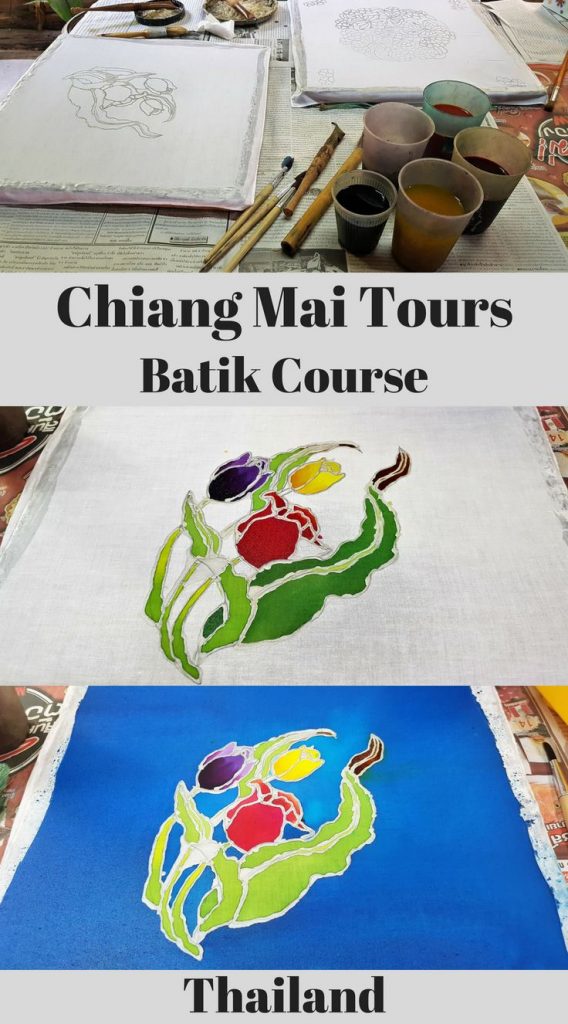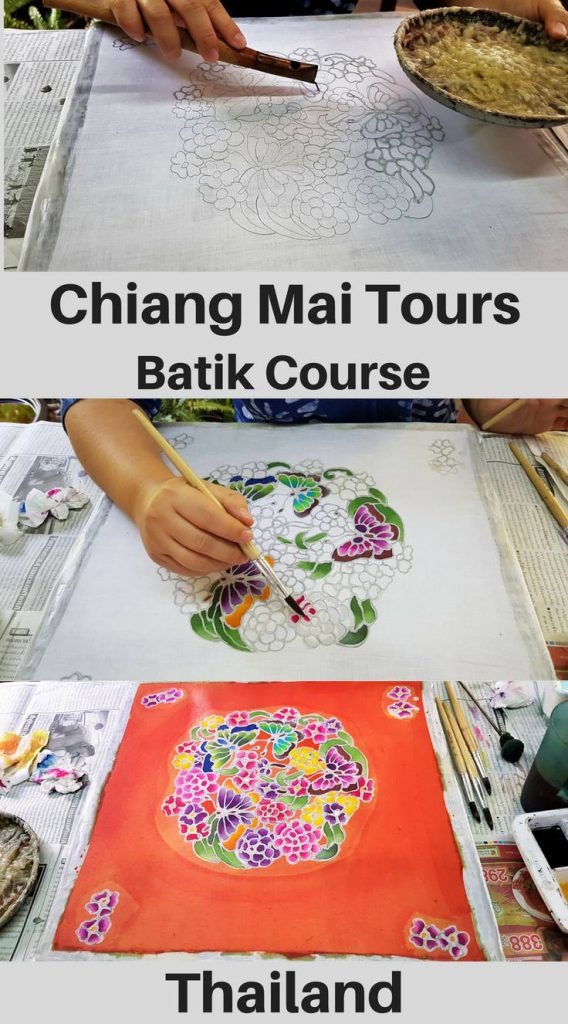I am always on the lookout for something different to do when I travel, so when I heard of Backstreet Academy, a tour company with a philosophy of offering unique tour experiences while giving back to the local community, I jumped at the chance to learn more about their Chiang Mai tours.
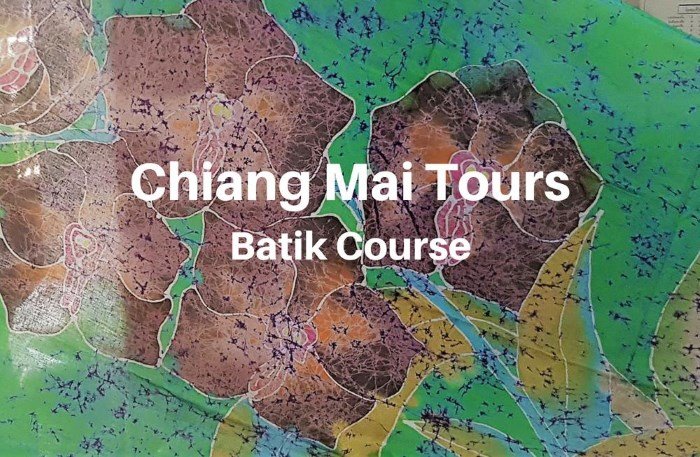

What makes Backstreet Academy tours so unique? You get to interact within the local community while discovering new skills and traditional crafts that have been handed down for generations. There are a wide range of tour experiences to choose from, including Chiang Mai local tours and tours in destinations across Asia.
Chiang Mai Day Tours
There are a number of Chiang Mai excursions available, I was interested in the silversmith workshop, gold leaf lacquerware, batik course and hill tribe weaving course but in the end, I chose the batik course, something that had fascinated me for years.
Chiang Mai Batik Course
Back Street Academy tours cater to the independent traveller, so you can choose to get transport to venue on your own or for those who like a more structured tour there is the round-trip transfer option. The Batik Course can be a little tricky to find so I suggest taking the round-trip transfer option.
I was welcomed by Prapada from Backstreet Academy and introduced to Nan a batik artisan who would be my host for the day. We sat in the cool relaxing atmosphere of Nan’s traditional Thai style home and began the 6-hour introduction into the art of batik.
What is Batik?
Batik is an artform that uses wax and dye to form decorative patterns on cloth. The artform has been used by many cultures including the ancient Egyptians.
Batik Techniques
Nan showed me some examples of batik pattern techniques, they range from simple designs to intricately detailed patterns that are exquisite works of art and highly prized.
The basic painting technique is the possibly the easiest to learn, lines are drawn on fabric with wax and then the fabric is painted or soaked in dye. Once the wax has been removed in hot water white lines are left behind to frame the painted pattern.
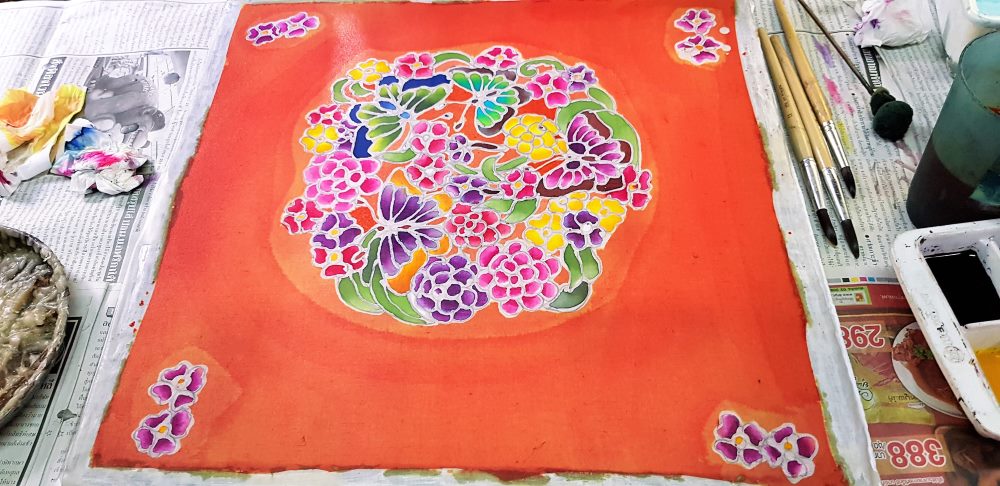
The cracking technique involves applying wax to a large surface of fabric, waiting for the wax to harden, then scrunching up the cloth so cracks appear in the wax. The cloth is then soaked in dye and once the wax has been removed in hot water it leaves a cracked affect in dye across the cloth.
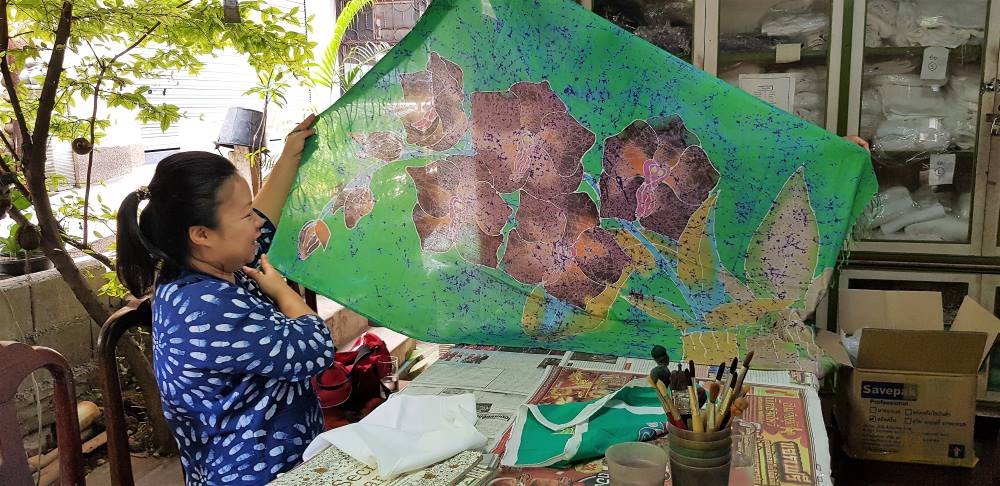
A look similar to the Japanese Shibori pattern can be produced by making a pattern design on cloth with thick brush strokes of wax. The material is then soaked in a dark blue indigo dye to create a crisp blue and white pattern. Nan was wearing a blouse in this design, and it was example of how creative this technique can be.
The Batik Course begins
The first thing you have to do is choose a pattern. Nan had some beautiful illustration books, many patterns were intricately detailed, works only a true artisan could produce. I decided to play it safe and chose to go for something simpler, a gorgeous tulip pattern.
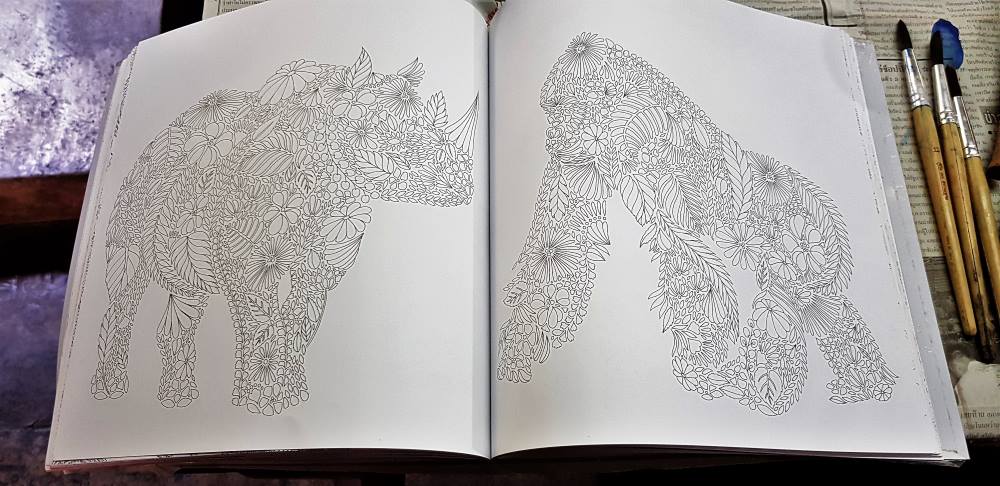
Now that I had chosen my pattern, it was time to trace it on to a square of white cotton. Nan told me that natural fibres such as cotton, silk and linen are the best fabrics to work with as the dye takes to the fabric.
The next step is to attach the square of material to a wooden frame with melted wax, once the material is pulled tight on the frame, it’s time to trace the lines with a pen like tool called a canting.
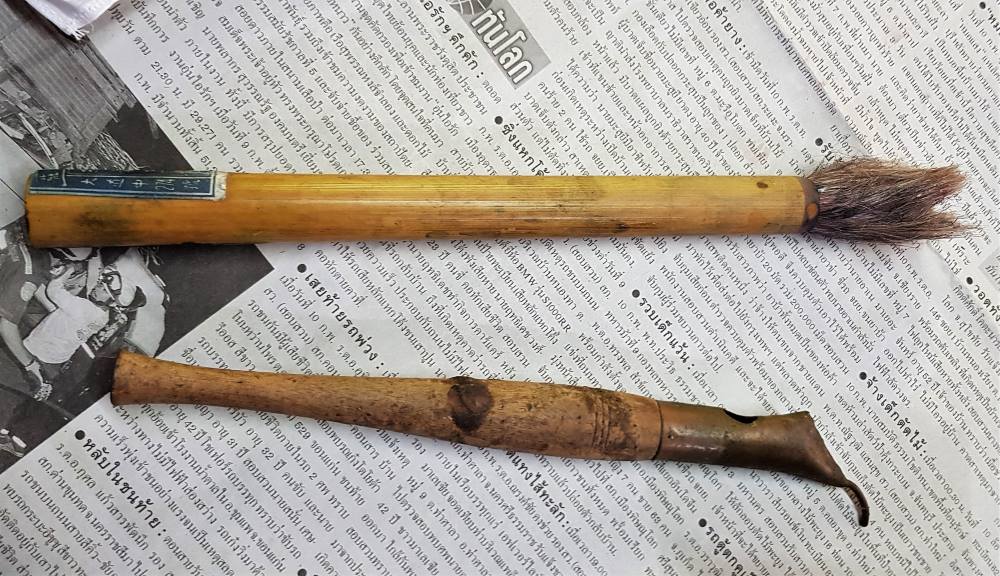
The canting is dipped into melted wax, the wax fills the reservoir and comes out of a fine tipped nib. Working quickly, I traced the lines making sure the wax soaked through to the underside. I had to re-dip your canting a few times as the wax solidifies quickly.
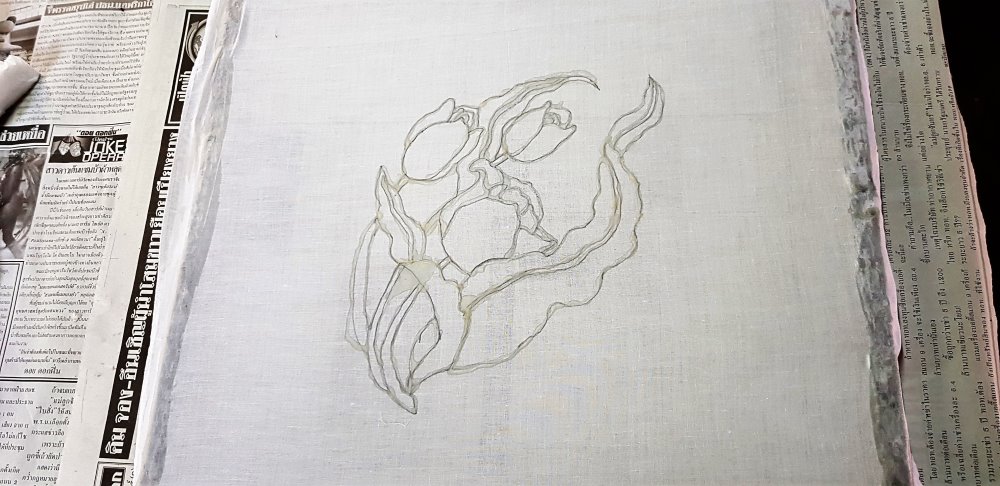
Once the lines are traced in wax it was time to get down to the fun part of painting with dye. Nan had many colours to choose from and she taught me a few paint techniques to add depth to the pattern. Using a fine brush, I got to work painting the tulips making sure to stay within the lines of wax.
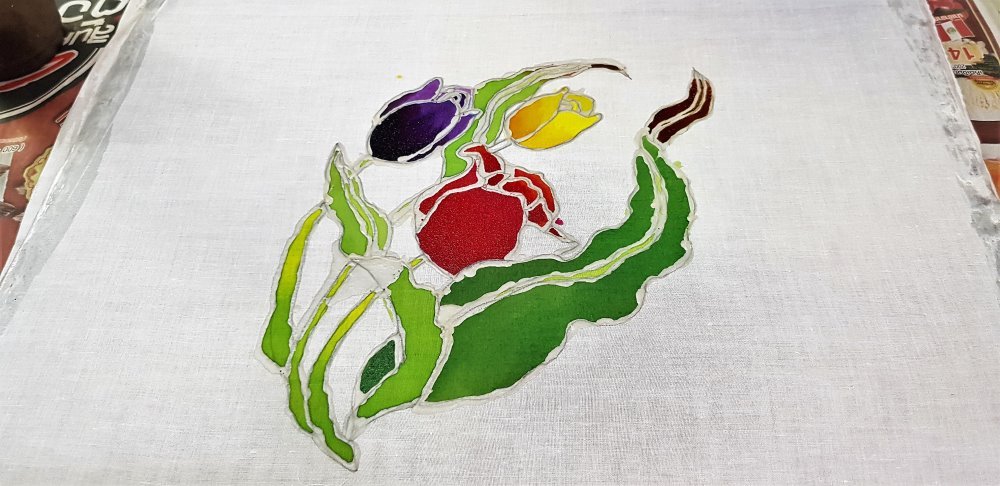
Nan sat across from me working on a complex illustration of flowers and butterfly’s. Watching her work, you could see her years of experience as she quickly traced the pattern out in wax.
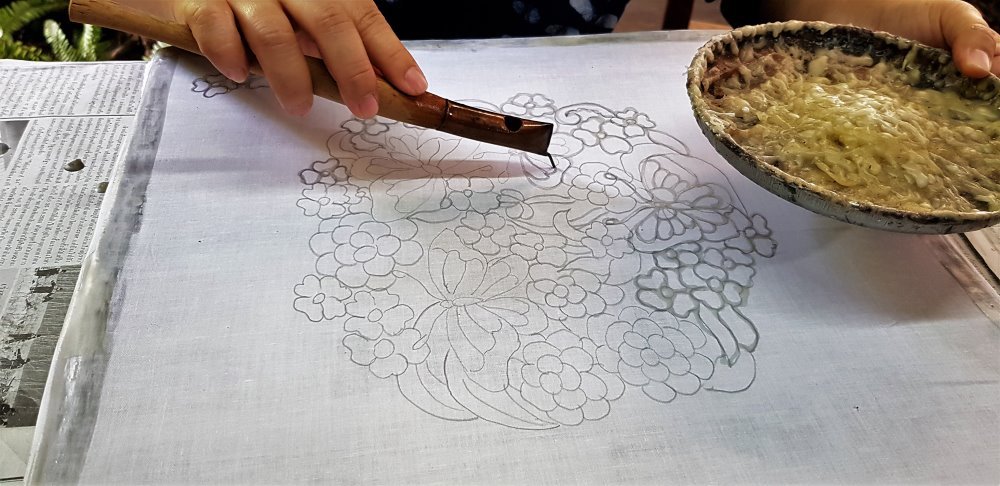
Once finished we put the batik out in the sun to dry and it was time for lunch. We enjoyed a delicious lunch of Pad Thai and fruit before getting back to work.
After the batik dried it is brushed over with a thick solution of Sodium Silicate to set the dye, it is then placed back out in the sun to dry.
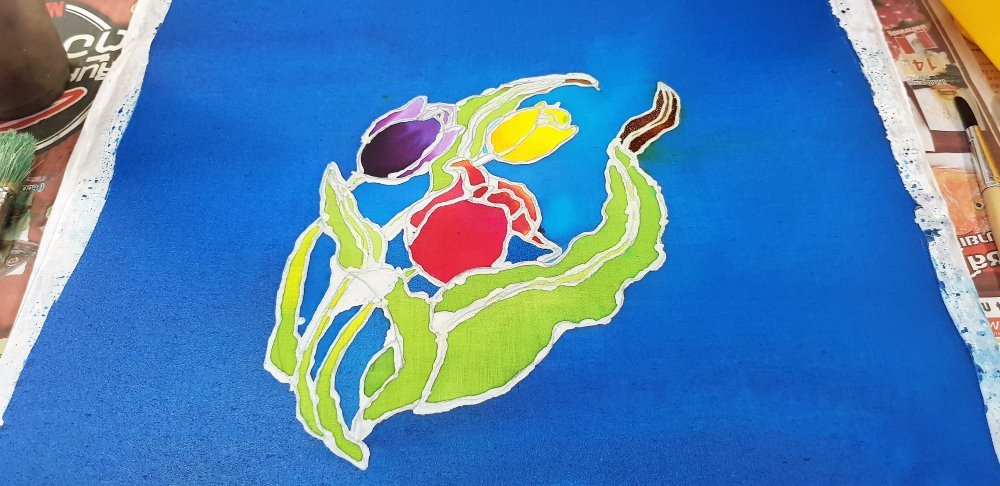
Nan continued working on her batik, it was incredible to watch delicate flowers and butterfly wings come to life with bright, vibrant colour.
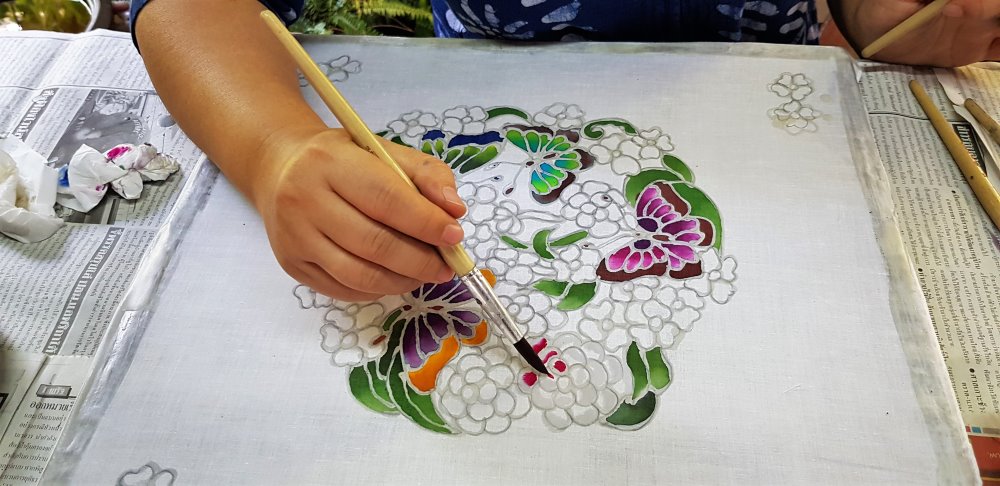
With our batiks dry, we headed out to the factory area, where a large cauldron of boiling water bubbled. We added liquid soap to the water and placed our batiks in the water to melt the wax. We then placed the batiks in cold water before they were taken away to be ironed dry.
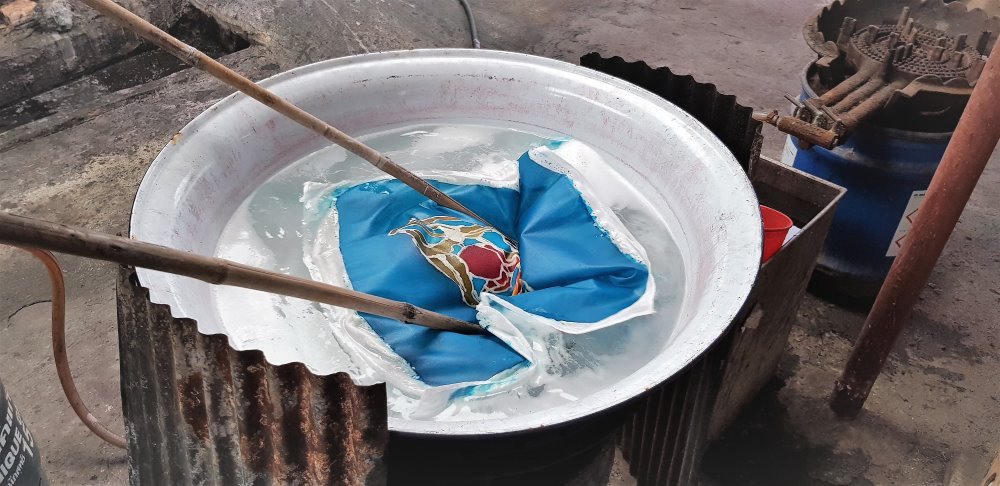
This gave us time to look at the range of batiks on display in the factory. There were fine silk scarves bursting with colour, deep indigo and white blouses, and a selection of uniquely patterned tops. Of course, I fell in love with one of the scarves and couldn’t resist buying it.
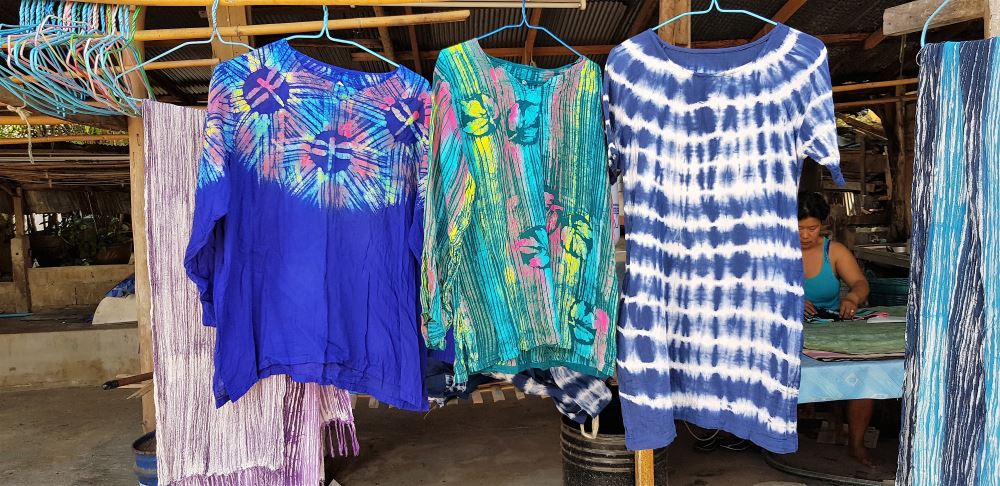
Soon it was time to say goodbye to Nan and her family, as I as leaving she presented me with her beautiful batik, something that I will always treasure.

Click here to check the Batik Tour Reviews and Pricing
Last Thoughts – Chiang Mai Tours
I had an absolutely wonderful day learning about batik with Nan, it opened my eyes to a new craft, one that I would seriously consider taking up. I am pleased to have had this opportunity to discover something unique, while helping the local Chiang Mai community.
When looking for Chiang Mai activities and Chiang Mai day tours you really should consider Backstreet Academy tours for something just a little different than your average guided tour.
What tours have you planned for you next Chiang Mai holiday? What is your favourite tour in Chiang Mai Thailand? We would love to hear from you, feel free to leave a comment.
PIN THIS TO YOUR TRAVEL PINTEREST BOARDS ↓

